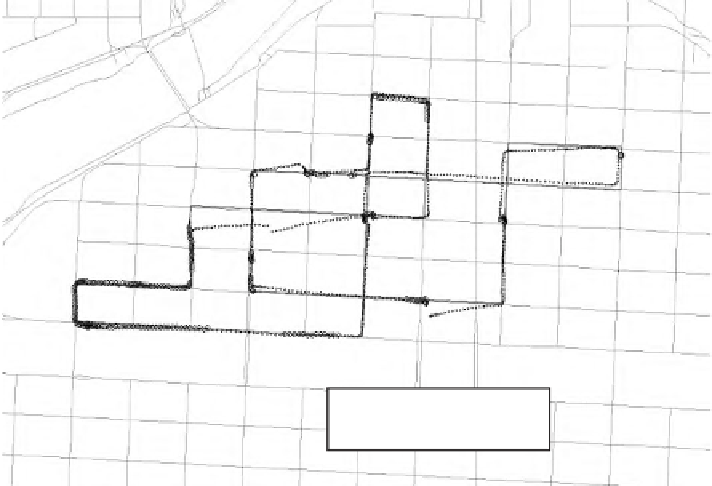Global Positioning System Reference
In-Depth Information
Reference
DR filtered
GPS solution
3rd Ave
9th Ave
0
250
500 m
Figure 9.34
GPS and ABS integration filter results.
Table 9.4
Summary Comparison, Gyro
Odometry, and ABS Integrations
Maximum
Error
RMS
Error
DR
ABS
115m
17m
Gyro/odometry
69m
13m
Source:
[29].
One drawback of “standard” GPS is the long time to demodulate the satellite orbit
parameters (ephemeris) and satellite clock correction parameters directly from the
satellites. If a GPS receiver could acquire the satellites instantly, an additional 18-30
seconds of continuous tracking would be required to demodulate the 50-bps naviga-
tion data message for each satellite to extract the required orbital elements and sat-
ellite clock correction terms. In applications in which the GPS receiver is part of an
emergency response system, waiting 30 seconds for data demodulation can seem
like an eternity. As such, methods to eliminate the need to demodulate the satellite
navigation data message directly and to decrease the acquisition time of the signals
in weak signal environments has been the basis for all assisted GPS work.
There are two basic methods of assisted GPS employed in cellular handsets,
mobile station (MS)-assisted
and
MS-based
. In cellular telephone terminology, MS
refers to a cellular phone. The two methods are quite different, but both require a
complete or nearly complete GPS receiver to be integrated into the cellular handset.
In the MS-assisted method, the position solution is computed in the network.
The MS-assisted handset shifts some of the functions of the traditional GPS receiver
to a network-based processor or server. This method requires most of the hardware
elements of a stand-alone GPS receiver (an antenna, RF section, and digital proces-










Search WWH ::

Custom Search